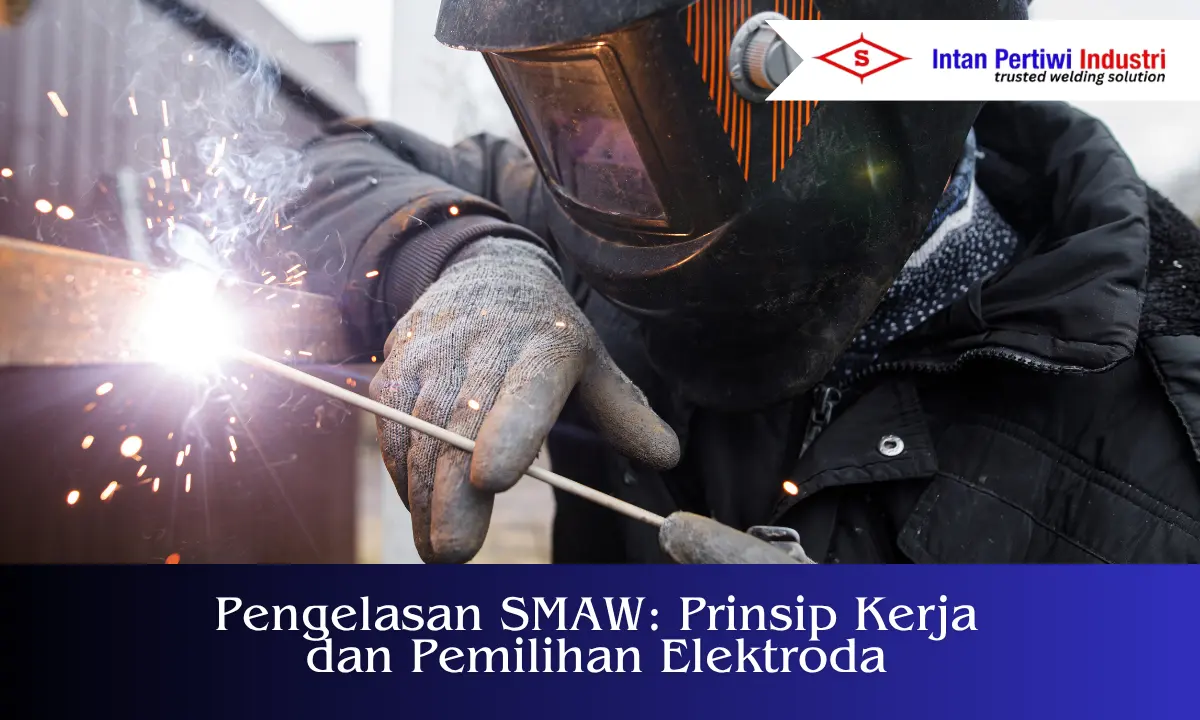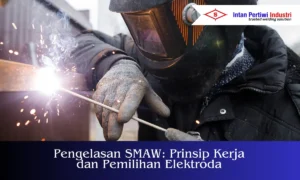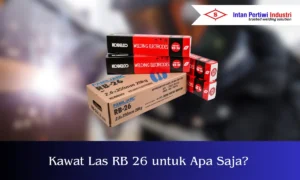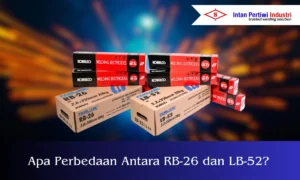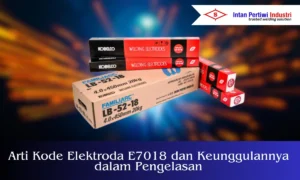What is SMAW welding? SMAW welding is the most common welding process found in general workshops and field projects. The equipment is compact, flexible for multiple positions, and capable of working on a wide range of carbon steel materials.
This guide focuses on real-world needs. You'll learn the principles of SMAW welding, how to select polarity, current-per-diameter guidelines, electrode mapping based on application, position-by-position techniques, and a practical safety and health checklist and troubleshooting steps.
Table of Contents
ToggleWhat is SMAW Welding?
SMAW, or Shielded Metal Arc Welding, is also often called stick welding or MMA. An electric arc is formed between the tip of a flux-coated electrode and the workpiece.
The flux layer melts, producing a shielding gas and slag that seals the molten metal pool to prevent air contamination. After solidifying, the slag is removed to reveal the weld bead.
The power source used can be either direct current or alternating current. Core equipment includes a welding machine, ground cable, electrode holder, and complete personal protective equipment.
Main components in SMAW welding
- Power source with current regulation and if available auxiliary features such as hot start and arc force.
- The holder and working cable are well maintained so that the voltage drop is not excessive.
- Welding electrodes are coated with flux that suits the material and welding task.
- Personal protective equipment includes welding helmets, gloves, heat-resistant clothing, safety glasses, and work shoes.
Principle of flux protection
Flux releases a shielding gas that drives oxygen and nitrogen from the weld pool. Flux also forms a slag that stabilizes the pool, slows cooling, and helps produce a smooth bead surface.
DCEP, DCEN, and AC in SMAW welding
Polarity selection affects penetration, arc stability, and pool control.
DCEP
Direct current with a positive electrode tends to provide deeper penetration and a sharper arc. It is widely used with low-hydrogen electrodes such as E7016 and E7018 in joints that require strength and toughness.
DCEN
Direct current with a negative electrode creates a more even heat distribution on the surface, which helps when controlling pools on thin plates or when chasing fine beads.
Suitable for some rutile type electrodes that support DCEN.
AC
Alternating current offers a good compromise for general applications and is useful when the field power supply provides an AC transformer. Many E6013 class circuits operate stably on AC.
Quick guide
- Root or high penetration needs tend to use DCEP.
- Thin plates and gentle pool controls tend to use DCEN or E6013 in AC.
- Always follow the manufacturer's recommendations on the packaging and the project WPS.
The most influential process variables
The following four variables determine bead quality and joint consistency in SMAW welding.
Current and electrode diameter
The current must be commensurate with the electrode diameter. Too low a current can cause the electrode to stick easily and produce high beads. Too high a current can cause sparks, undercuts, and an enlarged heat-affected zone.
Arc voltage and arc length
Arc length correlates with effective voltage. Excessively long arcs can lead to stray arcs, increased sparking, and porosity. Maintain an arc length approximately equal to the electrode core diameter.
Motion speed and heat input
Heat input can be estimated using a simple approximation: voltage times current times time per length. Too slow a speed increases heat input and the risk of distortion. Too fast a speed can potentially lead to under-fusion.
Angles and manipulation techniques
Use a push or pull angle of approximately five to fifteen degrees. Choose stringer beads to control penetration and minimize trapped slag. Use weave as needed on uphill positions or when the joint width requires even filling.
Quick table of recommended diameters and flows
The figures below are typical ranges for rutile and low-hydrogen electrodes on carbon steel. Always check the manufacturer's label and perform a short test on a sample before production.
| Diameter (mm) | Current (A) | Material thickness (mm) |
|---|---|---|
| 2.0 | 40 to 70 | 1 to 2 |
| 2.6 | 60 to 100 | 2 to 4 |
| 3.2 | 90 to 130 | 3 to 8 |
| 4.0 | 130 to 180 | 6 to 12 |
| 5.0 | 170 to 240 | more than 10 |
Practice notes
If the engine has a hot start and arc force, increase the hot start slightly to make starting easier. Adjust the arc force just enough to avoid excessive sparking.
Perform a restrike on the run off tab or area to be cut to avoid leaving defects on the component.
Choosing the right electrode for SMAW welding
Use the following mapping as a starting point then adapt it to the project WPS.
Low carbon steel and general fabrication
E6013 grades like RB 26 are suitable for thin to medium plate, tack, and general-purpose work. Slag is easily removed and the bead appearance is clean. Can be operated on both AC and DC.
RB 26 product references can be seen on the product page kobe rb 26 welding electrode.
Structures and connections that require toughness
Low hydrogen grades such as E7016 and E7018 provide better joint toughness provided dry handling is maintained.
Product reference:
- LB 52 E7016 for structural applications.
- LB 52 18 E7018 for high deposition rates in flat and horizontal positions.
- LB 52U is preferred on pipes for root and welding from one side with good pool control.
Pipe application with precise root control
High cellulose grades are commonly used for root passes in vertical up positions. Product reference KOBE 6010 for carbon steel and KOBE 7010S for higher tensile strength requirements.
Special materials
For stainless steel and cast iron, use filler compatible with the base metal composition and adhere to project standards. The work environment must be clean, and parameters must be set strictly.
Quick mapping summary
- General applications of thin plates tend to use E6013.
- Dynamic structures and loads tend to use E7016 or E7018 with a drying discipline.
- The vertical pipe root rises tend to use E6010 or E7010 with keyhole technique.
- Special materials using fillers according to project standards and procedures.
Also Read : How to Choose Welding Electrode Size RB-26
Welding Position Guide
Fillet positions one F to four F and plate positions one G to six G require technique adjustments for consistent SMAW welding.
Flat position
Hold the pull angle at about a five to ten degree angle. Use a stringer bead to minimize trapped slag. Adjust the flow according to the diameter to prevent the pool from becoming too fluid.
Horizontal position
Keep the pool from flowing downhill at a slight upward angle. Use small anchor movements to close the roots and tie both sides.
Vertical Position
For the upward stroke, use a slightly lower current than for the flat position. Apply a small triangle or lowercase "e" motion to hold the pool. For the downward stroke, it is only recommended for electrodes with specific thicknesses as per the WPS.
Above Head Position
Decrease the current decisively, shorten the arc, and use narrow stringers. Focus on pool control and slag cleaning rhythm between passes.
Common mistakes per position
- Porosity due to arc being too long or dirty surface.
- Undercut due to excessive current or excessive movement speed.
- Lack of fusion due to current being too low or angle being wrong.
Conclusion
SMAW welding excels for general fabrication, maintenance, and field work due to its simple equipment and flexibility in many positions.
Quality is determined by proper electrode selection, current setting according to diameter, short and stable arc length, consistent arc angle and speed, and slag cleaning with each pass.
For toughness demands use low hydrogen electrodes with orderly dry storage, while E6013 is effective for thin plates and multi-purpose work.
Follow polarity and WPS recommendations, run the K3 checklist, and perform short tests before production to ensure consistent and repeatable SMAW welding results.
If needed, consultation on electrode selection and WPS adjustment is available to help complete the job safely and efficiently.
For electrode options and specifications, please check the product on the page KOBE Welding Electrode.


